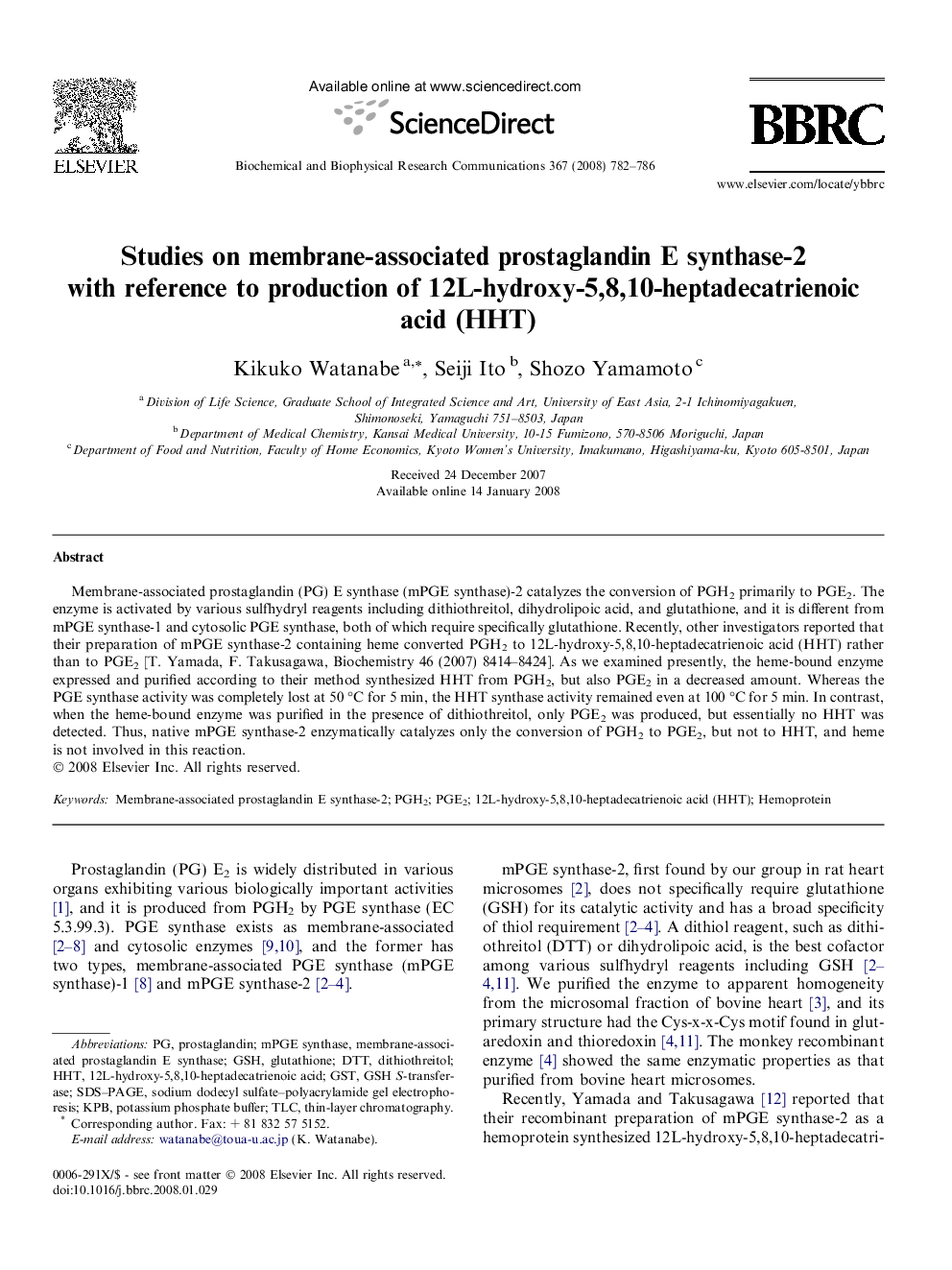| Article ID | Journal | Published Year | Pages | File Type |
|---|---|---|---|---|
| 1936393 | Biochemical and Biophysical Research Communications | 2008 | 5 Pages |
Membrane-associated prostaglandin (PG) E synthase (mPGE synthase)-2 catalyzes the conversion of PGH2 primarily to PGE2. The enzyme is activated by various sulfhydryl reagents including dithiothreitol, dihydrolipoic acid, and glutathione, and it is different from mPGE synthase-1 and cytosolic PGE synthase, both of which require specifically glutathione. Recently, other investigators reported that their preparation of mPGE synthase-2 containing heme converted PGH2 to 12L-hydroxy-5,8,10-heptadecatrienoic acid (HHT) rather than to PGE2 [T. Yamada, F. Takusagawa, Biochemistry 46 (2007) 8414–8424]. As we examined presently, the heme-bound enzyme expressed and purified according to their method synthesized HHT from PGH2, but also PGE2 in a decreased amount. Whereas the PGE synthase activity was completely lost at 50 °C for 5 min, the HHT synthase activity remained even at 100 °C for 5 min. In contrast, when the heme-bound enzyme was purified in the presence of dithiothreitol, only PGE2 was produced, but essentially no HHT was detected. Thus, native mPGE synthase-2 enzymatically catalyzes only the conversion of PGH2 to PGE2, but not to HHT, and heme is not involved in this reaction.
